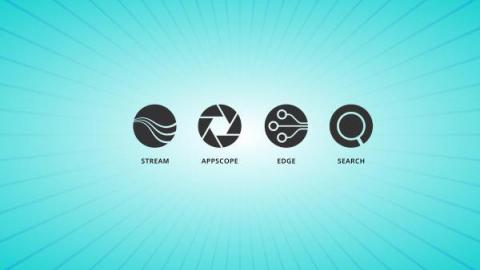Operations | Monitoring | ITSM | DevOps | Cloud
May 2022
Onboarding Data Into a New Cribl Stream Installation
Using the Aggregations and Chain Functions to Provide Timing Metrics for a Cribl Stream Pipeline
Why Cribl Edge Matters
Cribl Search: Redefining Search Around Today's Reality
As CEO of Cribl, one of my greatest privileges is to spend time on the road and on calls with our customers hearing about their needs and challenges. Cribl is a focused company. We build software for observability and security. With this lens, it becomes clear the industry is neglecting to address the unique needs of our users. There are many reasons, most of which are simply that vendors tend to come at a user’s problem through the lens of their existing technology.
Cribl Raises $150M in Series D Funding, Announces New Search Product, & Innovation Lab
We are pleased to announce we have closed our Series D round of funding, led by Tiger Global with participation from existing investors IVP, CRV, Redpoint Ventures, Sequoia, and Greylock Partners. In this round, we raised $150M, bringing our total raised to over $400M. This new fundraising round further validates the value we provide to customers.
Why Choice and Control Matters with Observability and Security Data
“We lost choice and control when we migrated to Splunk Cloud, but got it back when we adopted Cribl Stream.” The above quote is from a new Cribl customer talking about why they adopted Cribl Stream to manage observability and security data.
Announcing Cribl University!
How to Create a Cribl Pack
Working with Sample Files in Cribl Stream
Why Small Bugs Matter at Cribl
Everybody is used to dealing with the bugs on their smartphone and other technology devices In their homes that have been an issue for years. The fact that they may never be resolved is just one of those things that we’ve decided to accept. At Cribl, we approach this situation differently — we’re not okay with bugs of any size.
Event Reduction in Four Easy Ways with Cribl Stream
One of Cribl Stream’s selling points is the reduction of ingested log volume, which helps our customers control costs and improve system performance. This can be accomplished in two ways – either by eliminating duplicate or unnecessary fields and null values within the events, or controlling the number of specific events that actually get sent to the destinations through strategic filtering.
Webinar Recap: Best Practices for Right-Sizing and Overhauling Your Architecture
Last week, we hosted a webinar on the easiest way to right-size – and safest way to overhaul – your architecture. One of the scenarios we’re seeing come up more and more with prospects and customers is the need to update your architecture, and particularly your security architecture, as new needs and threats arise. As I’m sure you all know, that can be a real hassle, put a strain on your resources, and put your security posture at risk if it isn’t done well.
Up the Creek Without a Paddle: Easing the Strain on Your Analytics Systems
When it comes to your analytics tools, would you say they’re getting easier to manage overall, or is it increasingly difficult? Can you easily scale to meet new compliance requirements, or is there so much custom work required that the pace of change is too much for your team to handle? Do you feel in control over how and where your observability data flows, or do you feel beholden to your vendors? This blog post will shed light on how you can ease the strain on your downstream systems.
Deployment Best Practices
Getting Better Sysmon Data Using Cribl Stream
System Monitor, better known as Sysmon, is one of my favorite security datasets. The data is crazy detailed and offers a great way to power security detection and response since it gives cyber security teams a roadmap to understand exactly what systems or people are doing while they use any Windows operating systems. The avalanche of the data is the downside and why observability engineers need tools like Cribl Stream to manage and enrich Sysmon data to make it more useful and more cost-effective.
Protect the Business with Cribl Packs: Webinar Recap
The second in our Feature Highlights webinar series, Protect the Business with Cribl Packs, highlights Packs and security use cases. Packs enable you to share complex Stream/Edge configurations across multiple Worker Groups/Fleets, between Stream/Edge deployments or with the Cribl Community. Packs roll up best practices to ensure Site Reliability Engineering (SRE) teams have the required data to protect the business.
















